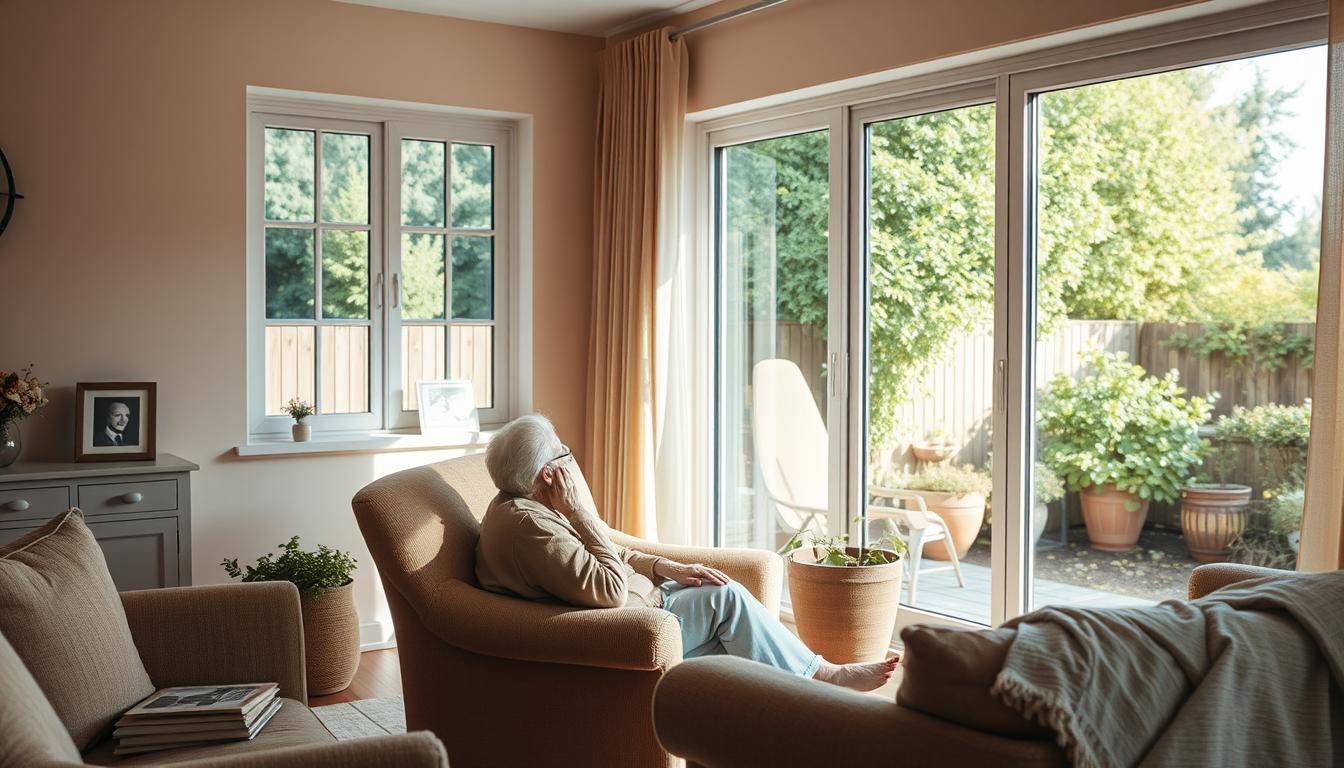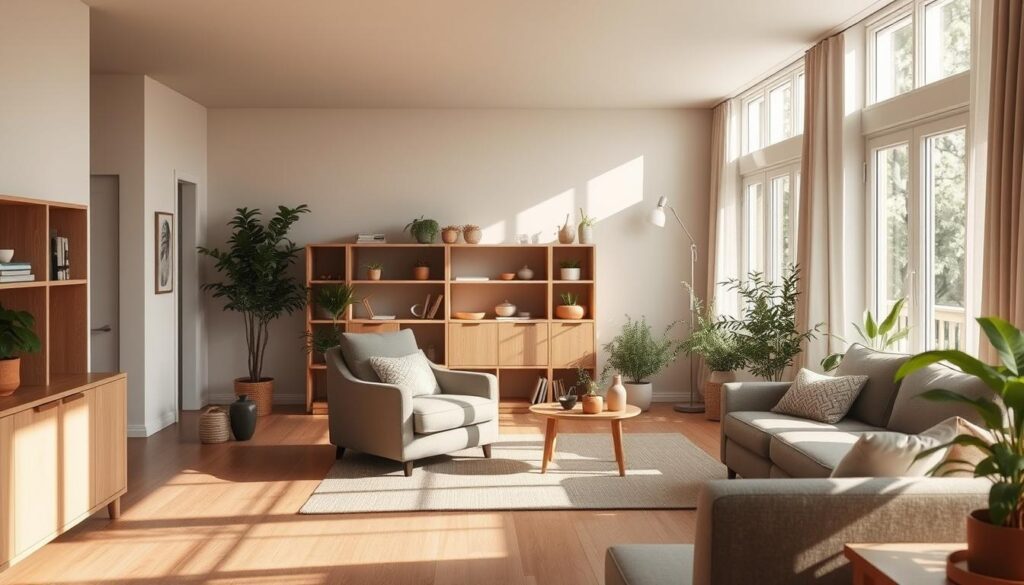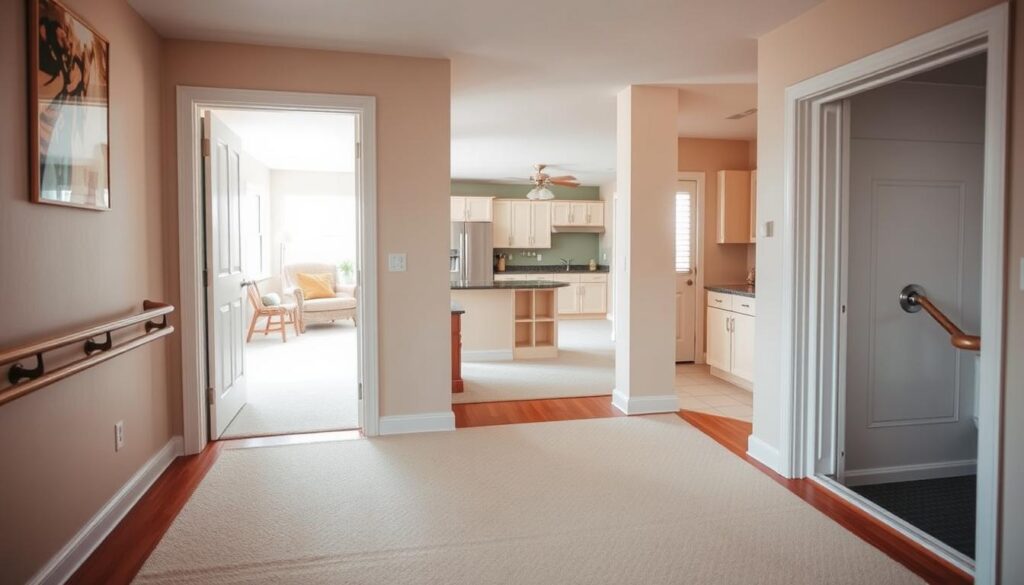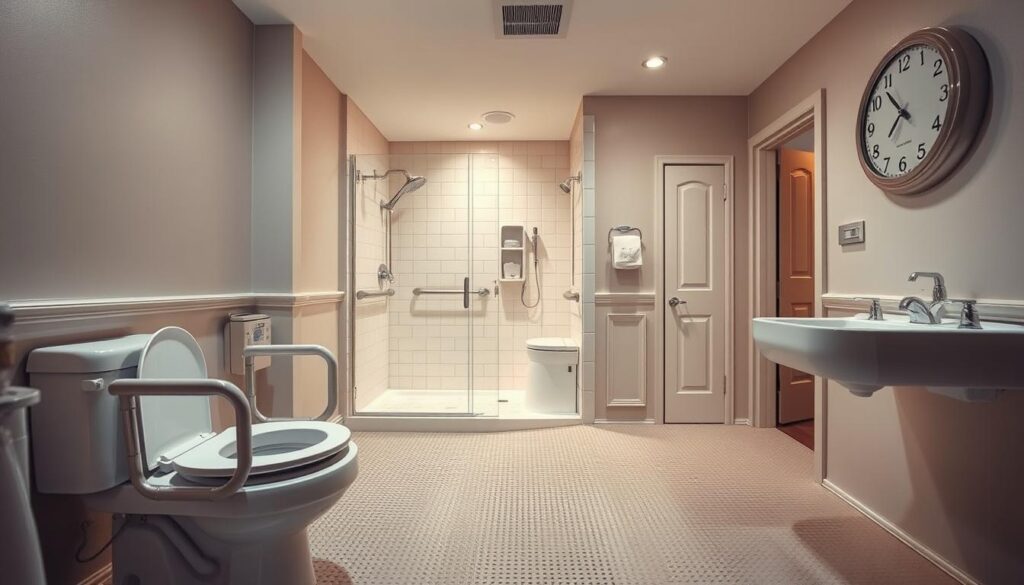- April 18, 2025
Welcome to Dementia World elderly home services



In the UK, over 850,000 people live with dementia. This number is set to grow. The design and layout of a home can greatly affect the safety, comfort, and independence of those with dementia.
People with dementia may forget where they are or how things work. Making the home environment more supportive can improve their life quality.
This article will share practical tips for creating a supportive home environment. It aims to enhance the well-being of individuals with dementia.
To support those with dementia, we must understand their daily challenges. Dementia impacts people differently. So, it’s key to make home adaptations that fit each person’s needs.
Dementia makes everyday tasks hard, like cooking and personal care. Simple actions become tough due to memory loss and physical issues.
Dementia changes daily life in many ways. It causes memory loss, confusion, and trouble with talking. Simple tasks become complex, and the right environment is vital for coping.
Supportive home design aims for safety, comfort, and independence. It includes clear signs, less clutter, and easy-to-use layouts. These help with navigation and daily tasks.
| Design Principle | Benefit for Dementia Patients |
|---|---|
| Clear Signage | Enhances navigation and reduces confusion |
| Minimal Clutter | Reduces risk of falls and improves safety |
| Adapted Layout | Facilitates independence in daily tasks |

Keeping a home safe is key when living with dementia. Making the environment safe and supportive boosts quality of life and independence. Simple changes and assistive technology can make a big difference.
Preventing falls is a major concern in a dementia-friendly home. It’s important to remove tripping hazards like loose rugs or mats. Secure any loose wiring and keep walkways clear. Handrails in key spots can also help prevent accidents.
It’s vital to manage fire and electrical risks. Installing smoke detectors and ensuring electrical appliances are safe is essential. Using devices with automatic shut-off can prevent overheating.
For those with dementia who wander, safety measures are key. Secure locks on doors and windows are essential. Consider using technology like door alarms to alert caregivers if someone tries to leave.
Helpful technology and assistive devices can enhance safety. Tools like clocks with large LCD displays and reminder devices support daily life. 
Making a home dementia-friendly means adapting each room for daily life. These changes can greatly improve comfort, safety, and independence for those with dementia.
The kitchen is a key area for adaptation. Using plates, cups, and tablecloths with contrasting colours helps with item recognition. Simplifying the layout and removing clutter also reduces confusion and risk.
Bathroom safety is essential. Removing the toilet lid can help with identification. Installing grab bars and non-slip mats prevents falls. Good lighting also boosts safety and comfort.

Bedrooms and living areas should be calm and familiar. Clear signage and labelling aid navigation. Flat, obstacle-free walking surfaces prevent falls.
Sensory factors are vital in the home. Reducing clutter and noise helps avoid confusion and agitation. Soft lighting and comfortable temperatures also improve the environment.
Gardens and outdoor areas must be safe and easy to access. Flat, well-marked paths encourage exploration. Adding sensory elements like plants and water features is also beneficial.
Implementing these adaptations room by room can make a home supportive and dementia-friendly. It enhances comfort and independence.
Making your home dementia-friendly is key to supporting those with dementia. It boosts their safety, comfort, and independence. By adding the right adaptations and safety features, you can greatly improve their life quality.
Changing your home to meet your loved one’s needs helps them stay active and mentally sharp. It also keeps them connected with loved ones. This can greatly improve their well-being and help them keep up with familiar routines.
Good dementia care means creating a home that suits your loved one’s needs. This ensures their home is safe and comfortable. It supports their independence and improves their overall life quality.